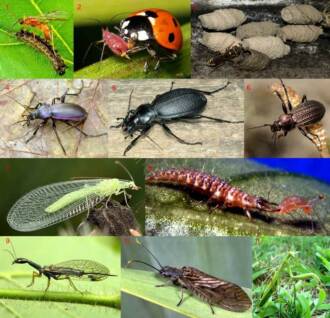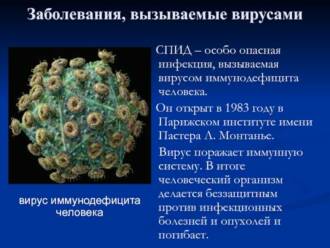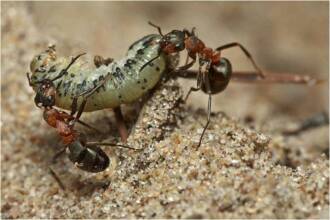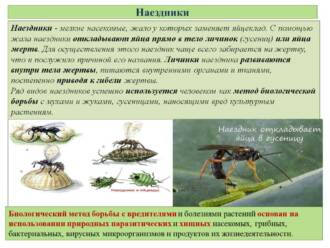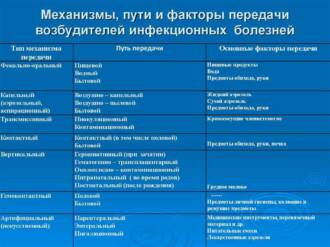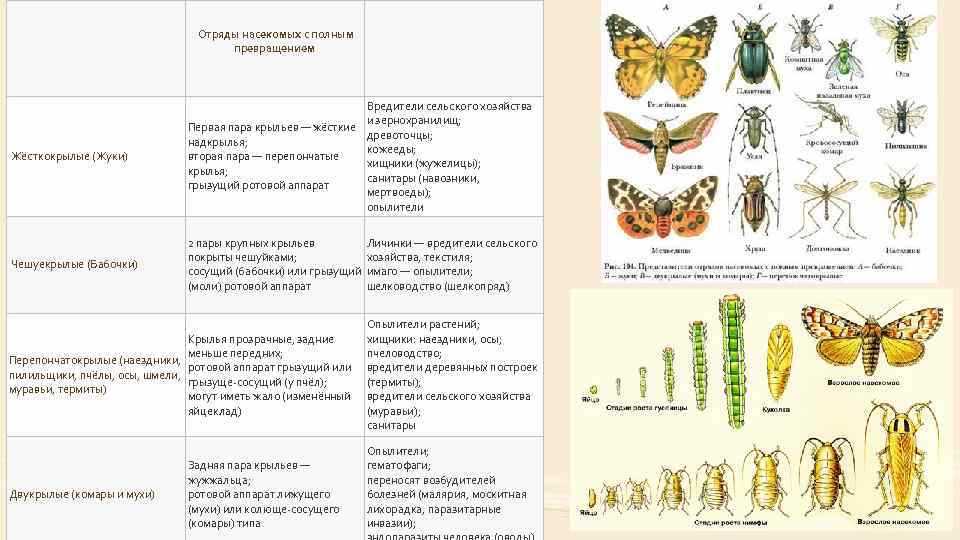
Butterflies are one of the most beautiful and amazing groups of insects. They attract attention with their delicate wings and bright colors, as well as their laid-back flight. However, butterflies are becoming an object of interest not only for scientists and nature lovers, but also for parasitic insects.
Parasitic insects are insect species that use other organisms as hosts for their reproduction and survival. One of the most well-known examples of parasitic insects that affect butterflies are the caterpillars of parasitic wasps. The caterpillars of these wasps feed on the tissues of butterflies, disrupting their normal development and leading to their death. This is a serious threat to the population and diversity of butterfly species.
The consequences of parasitism on butterflies can be varied. Firstly, they can lead to population decline, as parasitic wasp caterpillars feed on butterfly caterpillars. Secondly, they may lead to changes in species diversity, as some species of butterflies may be particularly vulnerable to certain types of parasitic insects. Thus, parasitic insects can have a significant impact on the ecosystem and biodiversity in which they exist.
The study of the influence of parasitic insects on butterflies helps to understand the complex interactions in nature and to identify factors that may contribute to the conservation of butterfly populations and diversity. This can be useful for developing strategies for the conservation and sustainable management of ecosystems in order to prevent the negative effects of parasitic impacts and preserve the beauty and diversity of these amazing insects.
Parasitic insects: what is it?
Parasitic insects are a group of insects that depend on other organisms, called hosts, for their survival and reproduction. They use hosts as a source of food, a place for larval development, or to lay their eggs. Parasitic insects can come in many different forms, including bugs, spiders, ants, and even other insects.
One of the most well-known types of parasitic insects is the parasitic wasp. They lay their eggs in the body of butterfly caterpillars, which serve as their hosts. The wasp larvae feed on the caterpillars' tissues, parasitizing their growth and development. After the wasp larva has completed its development, it emerges from the caterpillar's body and turns into an adult insect.
Parasitic insects can have a significant impact on butterfly populations and diversity. They can destroy caterpillars by feeding on their tissues and stopping their development. This can lead to a decrease in the abundance and diversity of butterflies in a particular area. In addition, some species of parasitic insects may be specific to certain species of butterflies, which may threaten the survival of these species.
The study of parasitic insects and their interactions with butterflies is an important aspect for understanding ecology and maintaining species diversity. Improving our knowledge of parasitic insects can help develop measures to protect butterflies and prevent the threat they may pose.
Parasitic insects: what do butterflies suffer from?
Butterflies are one of the most beautiful and amazing creatures of nature. However, their numbers and species diversity are threatened by parasitic insects. These parasites can cause significant damage to butterflies and their eggs.
1. Harm from parasitic insect larvae
Parasitic insect larvae can enter the body of butterflies and develop inside them. They feed on the organs and tissues of the butterfly, which leads to its weakening and even death. Some types of parasites can also change the behavior of butterflies, causing them to perform actions that do not belong to their natural behavior.
2. Impact on population and species diversity
Parasitic insects can significantly reduce the population of butterflies. If parasites attack butterflies in large numbers, then this can lead to a decrease in the population and even to the extinction of some species. As a result, the level of species diversity in the ecosystem is reduced, which can have negative consequences for the entire ecosystem.
In general, parasitic insects pose a serious threat to butterflies and their diversity. Conservation of these beautiful creatures requires more careful study and control of parasites, as well as the preservation of their natural habitats.
Influence of Parasitic Insects on Butterfly Populations
Parasitic insects play a significant role in the population dynamics of butterflies. They are natural enemies of butterflies and can seriously affect their population and species diversity. Parasitic insects can attack butterflies at different stages of their life cycle, from eggs and larvae to adults.
Parasitoids — are insects that develop inside or on the body of other insects, feeding on their tissues or fluids. They can be parasitic wasps, flies or bugs. Butterfly parasitoids can lay their eggs on or inside butterfly eggs or larvae. Their larvae feed on the tissues of butterflies, which leads to their death. Thus, parasitoids can significantly reduce the population of butterflies and affect their diversity.
Diseases are also one of the factors affecting the butterfly population. Butterflies can become infected with various viruses, bacteria or fungi that cause disease and death. Some diseases can be transmitted from one moth to another through contact or feeding on the same plants. Diseases can lead to a significant reduction in the number of butterflies and reduce their diversity in a particular region.
Competition for resources may also play a role in the influence of parasitic insects on butterfly populations. Parasitic insects may compete with butterflies for food and breeding sites. If resources are limited, then parasitic insects can crowd out the butterflies and lead to their decline. This can lead to a decrease in the diversity of butterfly species in a particular area.
In general, parasitic insects have a significant impact on the butterfly population and contribute to the natural balance of the ecosystem. Studying the interaction between parasitic insects and butterflies allows a deeper understanding of the reasons for changes in the populations and diversity of butterfly species, as well as the development of measures to conserve their abundance and diversity.
Parasitic insects and diversity of butterfly species

Parasitic insects play an important role in influencing the population and diversity of butterfly species. They can be both internal and external parasites and are often in a constant struggle with butterflies for survival.
Internal parasites such as caterpillar parasitoids lay their eggs in butterfly caterpillars. When the eggs hatch, the parasitoid larvae begin to feed inside the caterpillar, parasitizing its resources and eventually killing it. This can significantly reduce the population of butterflies and affect their diversity of species.
External parasites such as wasps and parasitic insects inhabit the outer surface of butterflies and use them as hosts for their reproduction. They may lay their eggs on the bodies of butterflies or use them as food for their larvae. It can also negatively affect the population and diversity of butterfly species.
It should be noted that parasitic insects are not exclusively a threat to butterflies. They may also play an important role in balancing ecosystems and controlling insect populations. However, when their numbers become too high, or when they attack vulnerable butterfly populations, it can have serious consequences for the diversity and resilience of these beautiful creatures.
How do parasitic insects affect the life cycle of butterflies?
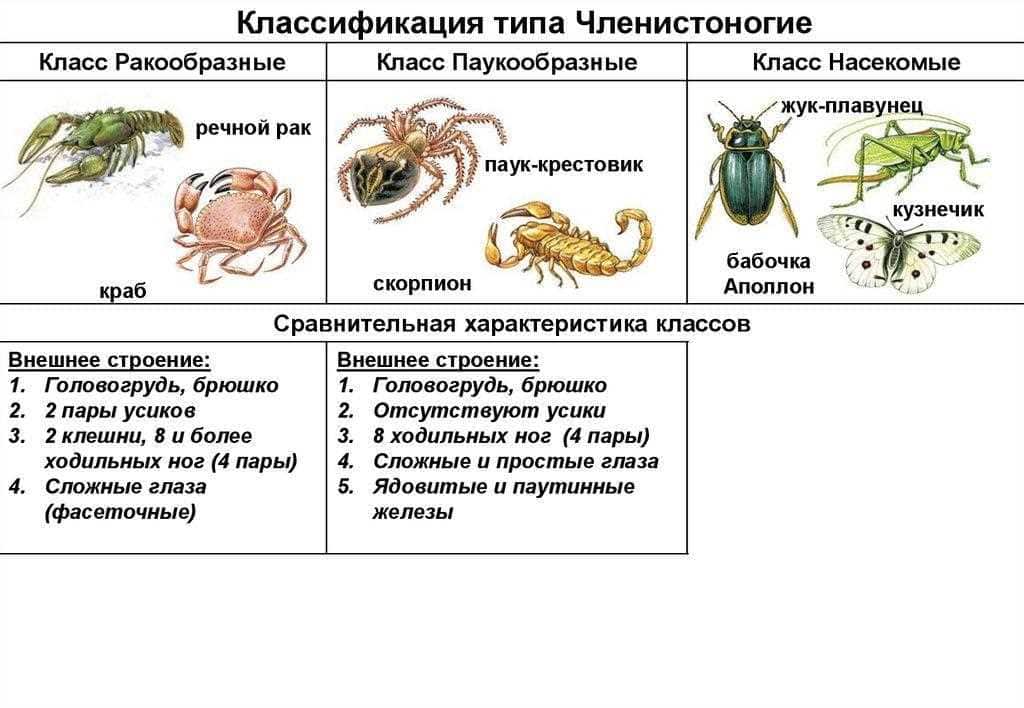
Parasitic insects play an important role in the life cycle of butterflies, affecting their population and species diversity. One of the most well-known parasites of butterflies are caterpillar flies. They lay their eggs on the leaves of plants that the butterfly caterpillars feed on. When a caterpillar eats a leaf with fly eggs, they get inside its body and begin to develop, feeding on its tissues.
Parasitic flies can significantly reduce the survival of butterfly caterpillars. They can cause disease, weaken the body of the caterpillar and compete with it for food. In addition, some species of flies can change the behavior of caterpillars, forcing them to seek shelter or feed on unusual plants, which also negatively affects their survival.
In addition to flies, other insects parasitize butterflies, such as fleas and octal gadflies. They also lay their eggs on caterpillars or butterfly pupae, after which the larvae begin to develop inside their bodies. These parasites can cause butterfly wing deformities or even death.
Thus, parasitic insects have a significant impact on the life cycle of butterflies, threatening their survival and contributing to population formation and species diversity. The study of the interaction between butterflies and their parasites is an important task in the field of ecology and conservation.
The main types of parasitic insects that infect butterflies
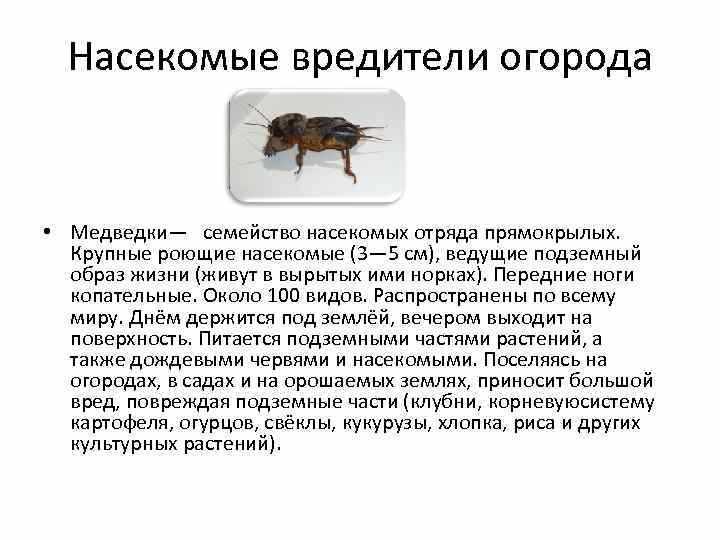
1. Braconids
Braconids are one of the most widespread groups of parasitic insects that affect butterflies. These small insects belong to the Braconidae family and are parasitoids, meaning they reproduce inside their hosts and feed on their tissues. Braconids lay their eggs inside the body of a butterfly caterpillar, their larvae then feed on the caterpillar's tissues, eventually killing it.
2. Ichny riders
Ichneumonidae are a group of insects belonging to the family Ichneumonidae. They are also parasitoids and reproduce in the body of the butterfly caterpillar. Ichneumon wasps lay their eggs in the caterpillar, and their larvae feed on its tissues, eventually leading to its death.
3. Parasitic gadflies
Gadflies are another group of parasitic insects that can affect butterflies. They belong to the Tachinidae family and are also parasitoids. Gadflies lay their eggs on the caterpillar's body, and their larvae burrow inside the caterpillar, feeding on its tissues and eventually killing it.
4. Parasitic axes
Wasps belonging to the Ichneumonidae family can also be parasitic insects that infect butterflies. They lay their eggs on a butterfly caterpillar, and their larvae feed on its tissues, harming it and eventually leading to its death.
5. Parasitic mites
Some species of parasitic mites, such as mites of the Ixodidae family, can also attack butterflies. They attach themselves to the body of a butterfly and feed on its blood. Ticks can be dangerous to butterflies, as they can carry infections and transmit them to the host.
Protection against parasitic insects: possible measures
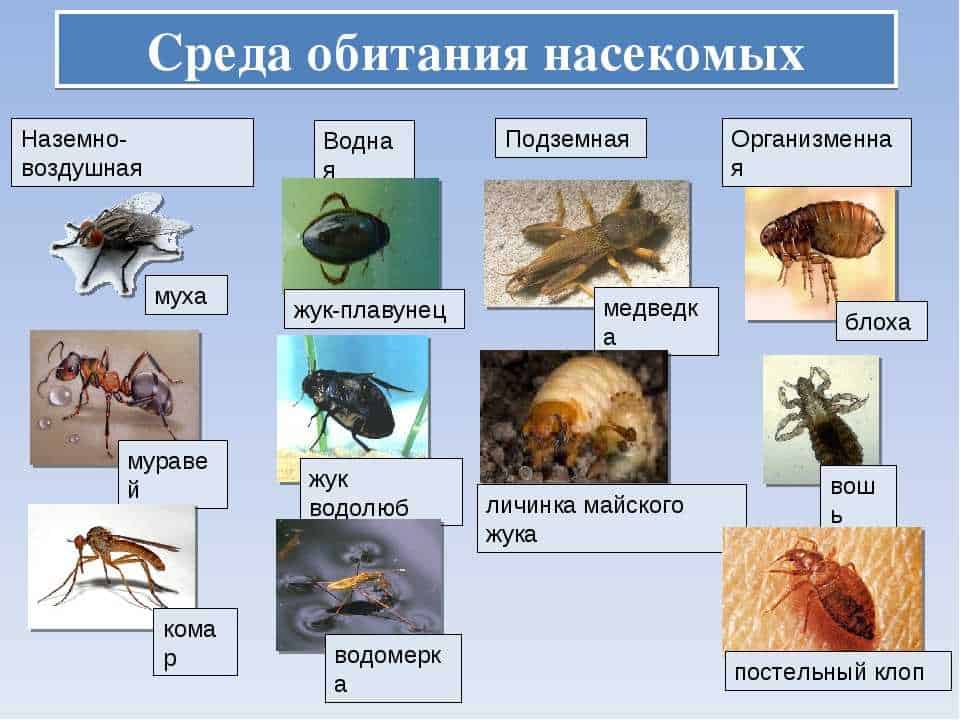
Parasitic insects pose a serious threat to butterflies and can greatly reduce their population and diversity. However, there are various measures that can help protect against these parasites.
1. Regular inspection
It is important to conduct regular inspections of butterflies and their environment to detect the presence of parasites. Detection of parasites at an early stage allows you to take the necessary measures to destroy them and prevent their spread.
2. Use of biological preparations
Biological preparations containing natural enemies of parasitic insects can be an effective means of protection. For example, the use of bacteria or viruses that attack and destroy parasites can help control their numbers.
3. Improved living conditions
Creating favorable habitat conditions for butterflies can help them cope with parasitic insects. For example, providing enough food and shelter, and preventing pollution and destruction of their habitats, helps to strengthen the immune system of butterflies and increase their resistance to parasites.
4. The use of chemicals
Chemical preparations can be used as a last resort to control parasitic insects. However, their potential negative effects on the environment and other organisms must be considered. Therefore, it is recommended to use chemicals only in case of emergency and in compliance with all prescriptions and recommendations of specialists.
The role of parasitic insects in the ecosystem

Parasitic insects play an important role in the ecosystem, interacting with other organisms and influencing their population and diversity.
Population regulation
Parasitic insects can control their host populations, helping to prevent over-reproduction and spread. They may be specialized for certain species or have a wide range of hosts. When the host population reaches a certain level, parasitic insects begin to actively multiply and attack their hosts, helping to reduce their numbers to a sustainable level.
Biodiversity conservation
Parasitic insects also contribute to the conservation of biodiversity by playing a role in the web of food chains and interacting with other organisms. They can be food for other animals, which is an important link in the food chain. In addition, parasitic insects can influence the behavior of their hosts, causing them to change their habits and habitats, which in turn can affect the composition and structure of the ecosystem.
Interaction with other species
Parasitic insects can also interact with other species, influencing their adaptation and evolution. For example, they can induce various defense responses in their hosts, which can eventually lead to changes in their genetic material and the development of new defense mechanisms. This may contribute to the evolutionary diversity and adaptation of species to changing environmental conditions.
Ways to study the interaction of parasitic insects with butterflies

Studying the interaction of parasitic insects with butterflies is an important step in understanding the impact of parasites on populations and species diversity. There are several ways to learn more about the interaction between these two groups of insects.
1. Field research
One of the main ways to study the interaction of parasitic insects with butterflies is through field studies. Researchers can observe interactions in the natural environment by studying the behavior and interactions of parasites and their hosts. This provides information on the distribution of parasites, their preferred hosts, and the consequences for the butterfly population.
2. Laboratory experiments
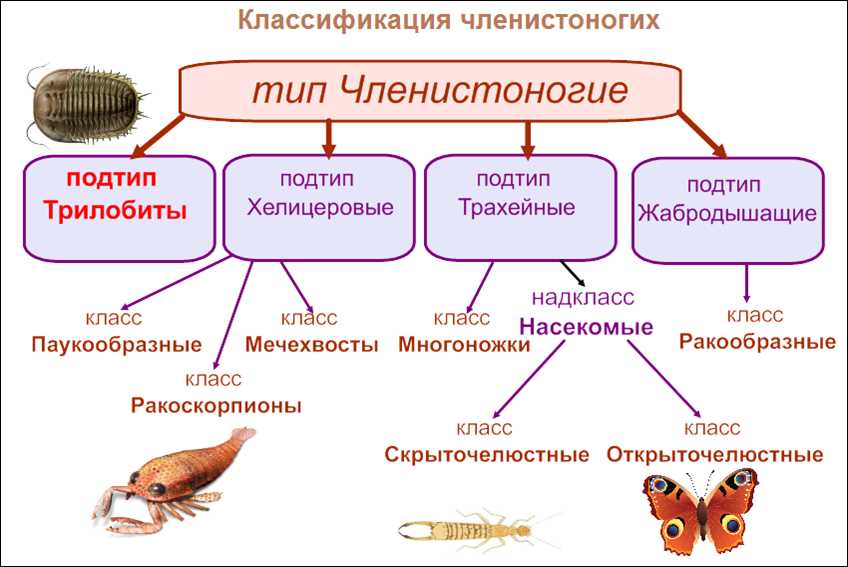
For a more detailed study of the interaction of parasitic insects with butterflies, laboratory experiments are being carried out. Researchers can create controlled conditions to study various aspects of the interaction, such as the effect of parasites on moth survival and reproduction. Laboratory experiments also make it possible to study the mechanisms of infection, development and spread of parasites.
3. Genetic research
To better understand the interaction of parasitic insects with butterflies, genetic studies are being carried out. Researchers can analyze the genetic make-up of parasites and their hosts to find out what factors influence interactions between them. Also, genetic studies can help determine the degree of infection of a population of butterflies and identify the genetic mechanisms that make some individuals more resistant to parasites.
The study of the interaction of parasitic insects with butterflies is a complex and multifaceted process. Combining different research methods allows one to gain a more complete picture of the impact of parasites on the population and diversity of butterfly species.

